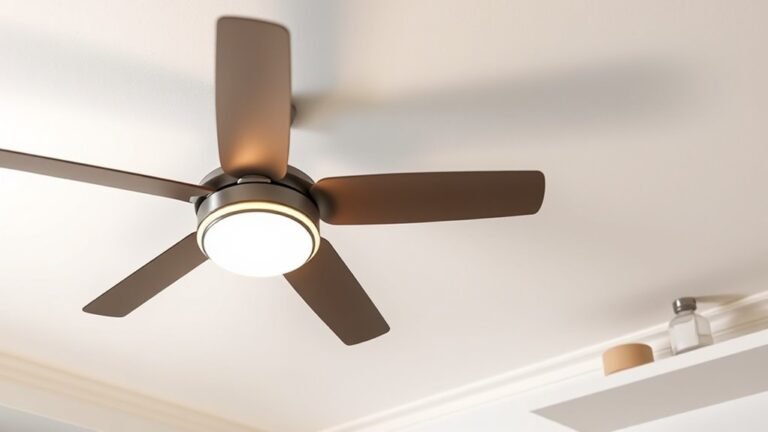Cleaning Tips for Homes With Chronic Illness Residents
When managing cleaning with chronic illness, prioritize tasks that impact your comfort most and break bigger chores into small steps. Use non-toxic, fragrance-free products to protect your health and choose ergonomic, lightweight tools to reduce strain. Create a flexible routine that fits your daily energy levels and focus on improving air quality to boost comfort. Don’t hesitate to ask for help when needed. You’ll find practical ways to keep your home safe and manageable as you explore further.
Prioritizing Cleaning Tasks Based on Energy Levels

Because managing chronic illness often means dealing with fluctuating energy levels, it’s important to prioritize your cleaning tasks accordingly. You can practice smart energy management by identifying high-impact chores that truly need your attention and saving less urgent ones for when you feel stronger. Don’t hesitate to delegate tasks to family members or friends, freeing up your energy for what’s essential. Breaking larger jobs into smaller, manageable steps also helps prevent burnout. Remember, prioritizing isn’t about doing everything at once—it’s about doing what matters most without overextending yourself. By focusing on energy management and task delegation, you’ll maintain a cleaner home while preserving your freedom and well-being. This approach lets you stay in control without sacrificing your health.
Using Non-Toxic and Hypoallergenic Cleaning Products
When you live with chronic illness, choosing non-toxic and hypoallergenic cleaning products can make a big difference in maintaining your health. You want eco friendly alternatives that don’t trigger symptoms or add harmful chemicals to your environment. Allergy free solutions, like fragrance-free sprays and plant-based cleaners, protect your lungs and skin while keeping your home fresh. These products help you regain control without compromising your well-being. Look for labels that specify hypoallergenic or free of harsh chemicals, and avoid synthetic fragrances and dyes. By switching to safer options, you create a cleaner, healthier space that supports your energy and comfort. Embracing these alternatives empowers you to maintain your home on your terms, without sacrificing your health or freedom.
Adapting Cleaning Tools for Ease of Use

Although cleaning can be challenging with chronic illness, adapting your tools can make the process much easier. Choosing ergonomic tools designed to reduce strain on your hands and wrists lets you clean without discomfort. Look for lightweight equipment that’s easy to maneuver, so you don’t tire quickly or risk aggravating pain. Tools with extended handles help you reach high or low areas without bending or stretching excessively. Consider adjustable or multi-functional items that suit your specific needs, giving you more control and freedom. By selecting cleaning tools that prioritize comfort and efficiency, you can maintain a cleaner home while protecting your energy and well-being. Remember, the right tools empower you to clean smarter—not harder.
Establishing a Simple and Consistent Cleaning Routine
Since managing chronic illness can drain your energy quickly, establishing a simple and consistent cleaning routine is essential. Focus on time management by breaking tasks into small, manageable chunks rather than tackling everything at once. This way, you won’t feel overwhelmed or confined by your cleaning schedule. Use flexible scheduling to fit cleaning into your day when you feel most capable, whether that’s morning, afternoon, or evening. Prioritize high-traffic areas that impact your comfort and health the most, and keep your routine adaptable to how you’re feeling each day. By creating a streamlined plan that respects your energy limits and need for freedom, you can maintain a clean home without unnecessary stress or exhaustion.
Incorporating Air Quality Improvement Techniques

Balancing your cleaning routine with your energy levels is a great start, but improving the air quality in your home can make a big difference in comfort and health, especially if you live with a chronic illness. You can boost air quality by using air purifiers, which trap dust, allergens, and other irritants, creating a cleaner breathing space. Choosing a purifier with a HEPA filter is especially effective. Additionally, don’t underestimate the power of proper ventilation systems. Opening windows when possible or installing ventilation fans helps circulate fresh air, reducing indoor pollutants and moisture buildup. These simple adjustments can give you more control over your environment, letting you breathe easier and feel freer in your own home without exhausting yourself.
Seeking Assistance and Support When Needed
When managing cleaning with a chronic illness, don’t hesitate to ask for reliable help. Finding trustworthy support can ease your workload and reduce stress. Building a network of friends, family, or professional services guarantees you’re not handling everything alone.
Identifying Reliable Help
How do you find trustworthy help to keep your home clean without adding stress? Start by evaluating cleaning services carefully, focusing on reliability and flexibility. When interviewing potential cleaners, ask about their experience with homes like yours and clarify your needs. Trust your instincts and look for transparent communication.
| Step | Key Question | What to Look For |
|---|---|---|
| Research | Is the service licensed? | Verified credentials |
| Interview | How do you handle sensitive tasks? | Empathy and experience |
| References | Can I contact past clients? | Positive feedback |
| Trial Cleaning | Are you open to feedback? | Willingness to adjust |
Building a Support Network
Although managing a clean home with chronic illness can feel overwhelming, building a reliable support network can make a significant difference. You don’t have to do it all alone—reaching out can lighten your load and offer emotional support when you need it most. Here’s how to start:
- Tap into community resources like local cleaning services or volunteer groups tailored for chronic illness support.
- Connect with friends, family, or neighbors who understand your situation and can lend a hand or simply provide encouragement.
- Join online or in-person support groups where members share tips, experiences, and motivation to maintain a healthy home environment.
Frequently Asked Questions
How Often Should Bedding Be Washed to Reduce Allergens?
You should wash your bedding materials at least once a week to keep allergens at bay. Regular washing frequency helps remove dust mites, pet dander, and pollen that can cause irritation. If you want more freedom from allergy symptoms, consider using hypoallergenic covers and washing at higher temperatures. This routine keeps your sleeping space fresh and comfy, making sure you wake up feeling free and refreshed every day.
What Are the Best Ways to Clean Pet Dander in the Home?
To tackle pet dander effectively, you’ll want to focus on thorough allergen removal. Vacuum your home frequently using a HEPA filter vacuum to trap tiny particles. Wash pet bedding and your own fabrics regularly in hot water. Wipe down hard surfaces with a damp cloth to prevent dander from becoming airborne. Keeping pets groomed and limiting their access to certain rooms also helps you maintain a cleaner, freer space without constant sneezing.
Can Houseplants Help Improve Indoor Air Quality for Chronic Illness Residents?
Think of houseplants as tiny green warriors fighting indoor pollution for you. Certain houseplant varieties, like spider plants and peace lilies, offer impressive air purifying benefits, helping to clear toxins and boost oxygen. While they don’t replace proper ventilation or cleaning, they add a natural layer of freshness and liveliness to your space. You’ll feel a greater sense of freedom breathing cleaner air surrounded by living greenery.
How Can I Safely Disinfect High-Touch Surfaces Without Harsh Chemicals?
You can safely disinfect high-touch surfaces by opting for natural disinfectant alternatives like vinegar, baking soda, or hydrogen peroxide. These gentle cleaning solutions avoid harsh chemicals but still keep your space clean and fresh. Mix equal parts water and white vinegar in a spray bottle for an easy, effective cleaner. This way, you maintain a healthy environment without sacrificing your freedom to choose safer, eco-friendly options.
What Flooring Types Are Easiest to Keep Clean for Sensitive Residents?
When choosing flooring that’s easy to keep clean, you’ll want to contemplate hardwood floors and tile options. Hardwood floors offer a smooth surface you can quickly sweep or mop, reducing dust and allergens. Tile options are great too, especially in areas prone to spills, since they resist stains and moisture. Both choices give you the freedom to maintain a fresh, tidy space without much hassle, helping you feel more comfortable and in control.






